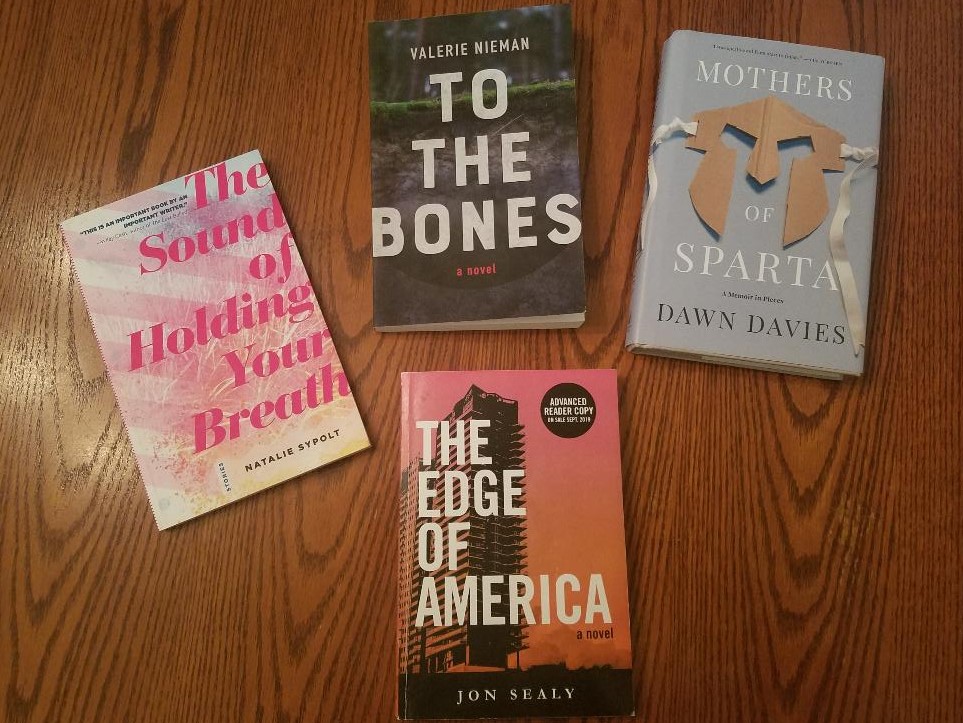or, how to deal with arrogant editors while setting fire to grief, loss, and writers’ block—all in an afternoon.
Guest Post by Tovli Simiryan
2020. There’s something ominous about saying, 2020, don’t you think? It has a hopeful aura, yet it reeks. It’s Orwellian. After all, by 2020 we expected to be living like the Jetsons. Well, aren’t we? We have cars that drive themselves; some are supposed to actually fly by the end of the year. Of course we’re afraid to get inside. “Details!” as my mother was known to comment, directing the conversation with her brand of self-centered sarcasm.
Frankly, she waited from the sixties until the moment of her 2019 death for Rosie the Robot to join her family. Unfortunately, the Rumba Vacuum was a disappointment to her. It wasn’t Rosie! She couldn’t discuss dust-bunnies or get it to pop the cork on the bottle of Prosecco her kids thought they’d successfully hidden from her. So, perhaps one’s expectations of the future are often wrapped in imprecision, or at least a tissue-papered hue of what might never be realized.
Will 2020 be a failure? I hope not. When these insecure thoughts race through our brain cells, my solution is the same as any other writer’s: grab white paper; latch on to a svelte gel-roller of a pen and turn insecurity into a short story, a blunt poem, or an essay. Nothing restores my self-confidence more than finishing a piece of writing and having a family member or friend say, “Where do you get this from?” “How do you remember these things?”
I love writing. I love the way something comes out and says just what you wanted to say. When this occurs, my place in the universe takes on an unbreakable sense of security and belonging. I am safe. I am worthy. I’m an introvert. I don’t talk; I write. Life is safe. Life is good.
Of course, not all writers are introverts. However, one thing I like to believe writers have in common is their little stories and songs become their children. They are born, raised; invested in and sent out into the world to find homes of their own and, hopefully make a meaningful change or statement no one else has thought to say before. Even if one word or a minor punctuation is unique, the writer has accomplished something beautiful and exclusive.
The year leading into 2020 was seminal. 2019 was the narrow bridge you make yourself navigate by learning to close your eyes, hum a tune, and precariously tip-toe across while learning to overcome fear and foreboding. Everyone died in 2019. Seriously. Only my little brother and I remain. The entire generation preceding us had left the world. If that wasn’t ominous enough, our own generation witnessed a fragility we’d never anticipated. Peers and loved ones we’d started kindergarten with discovered they were breakable and vulnerable. There were annoying knocks on their doors from diagnoses and illnesses that had taken their grandparents and great-grandparents. These malicious visitors pressed their unwelcome noses against the windows of our lives and rattled our door knobs. We knew, sooner or later, they’d have to be dealt with.
Solution? Pull out the pens, warm up the computer and knock off a few stories and a chapbook or two. Dust off the pages you should have sent out into the world a year ago, and encourage them to find a home. Write. Enjoy yourself. If you get stuck, find an antidote for writer’s block and patent it. While you’re at it, make peace with marketing. Consider becoming friends with someone who understands the nuances of 2020 copywriting. Give up on fear, point yourself toward the narrow bridge, find a unique tune, and enjoy the adventure. 2020 is happening, and you might as well jump into the Orwellian soup and have a good time, or meal, as the case may be.
Bobbie, our mother, passed away in 2019 while we were on vacation, enjoying our summer house outside Hillsboro, WV. She was robust, happy, and loved life. She’d moved to our Cleveland home due to significant health issues in 2013 following eighty years of California living. She did well. She thrived. However, in 2019 I began to see the same pattern I’d seen while caring for my great-grandmother. She was becoming frail. Her arms and legs resembled the balsa wood my little brother used to build his model airplanes. Just before our anticipated visit of Pearl S. Buck’s childhood home she became ill and had to be medevaced to Morgantown. My last memory of her was watching her disappear over the beautiful, awe-inspiring mountains of West Virginia on her way to a major medical center.
Change and loss do strange things. While she was living with us, she took center stage, and my writing took a seat in the back of the car. Still, a few short stories, poems and essays found homes of their own. One particular story was accepted in a new, but well-respected, foreign literary journal. I was excited to say the least. I signed a contract, even though no monetary payment was involved, and a 2020 publication date was identified. It would mean excellent exposure among writers I admired and wanted to emulate (Some since childhood!) My mother was quite impressed when I showed her the contract a year before her death.
As the publication date closed in, I received a copy of the story as it was to appear in print. There were the proverbial issues of comma here versus semi-colon there. Would you mind if we used block paragraphs versus indentations? Can we spell this foreign word using these English letters instead of those English letters? We require UK English instead of American English—do you mind?
I was a pushover. “No problem. You don’t like semicolons? Hey, use a comma; in fact, use two commas. Thank you for asking me. The copy looks fine.” Then it happened. I received an odd email from a sub-editor who recommended entire deletions, re-writes and other substantial changes.
Where is this emanating from? Was I just an innocent dufus, or did I mistakenly send something to an obscure writer’s workshop instead of an established publication? “You’re kidding me, right?” I mocked, privately. “Let’s accept a manuscript, sign a contract then wait almost a year to re-write the thing. Not!” I was obstinate to say the least.
Deep down, I knew this was not something I was going to tolerate. A good editor always should be taken seriously. When suggestions are made, the first thing a writer needs to do is freeze the ego. The second thing to do is listen. I did. I found myself reviewing suggestion after suggestion, rewrite requests and decisions to delete paragraphs and admonitions for using words that, according to a phantom editor, did not exist.
Good old 2019, the watershed year, the year where most of the folks I trusted and turned to, “the elders”, had passed away. It was inevitable. Along with my little brother, I’d become a member of the “first generation,” and we were alone. How daunting, lonely and frightening. I needed someone to tell me I was right, I was valuable. The only sound I heard was my own breath and my old computer making an odd clicking sensation.
This new generational membership began with questioning my ability, my sense of belonging and safety. Perhaps I was not a real writer, just a wanna-be hack. I had no one to commensurate with, no one to agree with me, no one who would even appreciate a well-placed cuss phrase. I was lost. For just a moment, the realization that writing might as well become a thing of the past was not so far fetched. I’d lost my self-confidence, and I was facing that narrow bridge without so much as a melody. I spent days rewriting. I implemented every so-called recommendation and deletion the magazine personnel had offered. It left me with a deeply embedded hollow feeling in the holy place from where words and ideas emanate. It was frightening, unsettling, and it made the grief for those we’d recently lost all that more devastating.
I decided to reach into the cyber world of writers, publishers, and editors; out-of-control writer egos and how-to formulas for standing up for ourselves. I was looking for support and understanding from my own kind. The result was odd. Without exception, the articles I found counseled writers to take a second seat: editors know best. Take the money, give up your words. Be compliant. Don’t rock the boat, or you’ll never be published again. It was disturbing. It left sadness behind that rivaled those losses recently encountered and collected as 2020 began.
Positive risks are scary, but it has been my experience that they usually pay off. I contacted a fellow writer and got back this response (I’m paraphrasing): “Just tell them to leave ‘the bitter whang’ alone.” It came from Rhonda Browning White, who’d recently published The Lightness of Water & Other Stories. I don’t know Rhonda well, but I enjoy her enthusiasm and writings. She didn’t disappoint me. Just that phrase—“the bitter whang,” Rhonda’s description of how a character created from her West Virginia culture and upbringing would describe the charming “scent” of diesel fuel, and an editor’s desire to exchange it for a blast of Downey, did it for me. In conclusion, she advised, “Don’t let them touch a word.” My self-confidence was back and my period of mourning the losses of 2019 was over.
After several deep breaths, stepping back to the edge of the earth for a day or two and taking a long, clear look at writers’ block and self-confidence, I realized it wasn’t my story anymore. I’d killed it. It no longer said what it was created to say, it was cardboard-ish and made no sense. It had no purpose and changed nothing in the world for the better or worse—an absolute disaster for a mysterious little story written in the irreal genre that thought it had found its perfect forever home.
Politely, I sent a note respectfully declining to make any changes, other than grammar, stylistic adjustments particular to the format of the publication, and compliance with transliteration consistency in the spelling of foreign words. I explained the story was likely not the best fit for the magazine after all and that I would be more comfortable withdrawing it from consideration.
We are now into the first month of 2020. My confidence as a writer has returned. I have sent several stories, poems and essays out into the world to see if they will find homes for themselves. The grief of 2019 is falling away. 2020! It sounds good like you’re pumping a shotgun, loaded for bear and trotting across the narrow bridges that make up our future. Isn’t it refreshing the air has the whang of fearlessness—the ambiance that satiates our writer-dreams with the perfect metaphor?
Tovli Simiryan lives near Lake Erie with her husband Yosif, who does all the talking. Tovli spends her time filling up little pieces of paper with words until they morph into stories and poems. Sometimes she makes these writings leave home, find cyber caves or journals of their own. They are so faithful to their creator, they often send her royalties. Stories and some poems are like that—always thinking of something outside themselves. A few journals that have housed Tovli’s writings are: Ariga, Chabad Magazine, Jewish Magazine, Jewish Ideals-Conversations, Raving Dove and Tiferet Journal. You can contact Tovli at: tovli102@outlook.com; webpage: http://tovlis.wix.com/tovliwriter

Tovli Simiryan













 When and where can we find it?
When and where can we find it?
